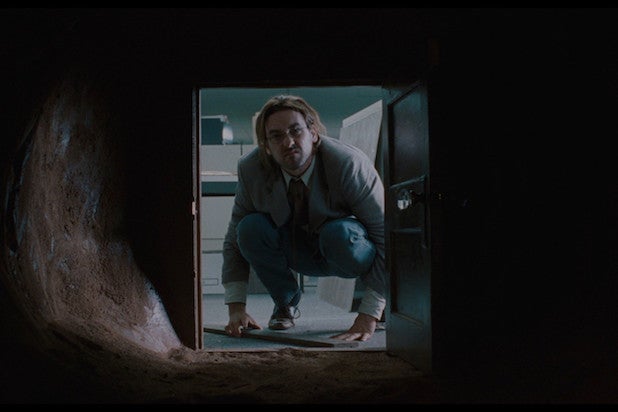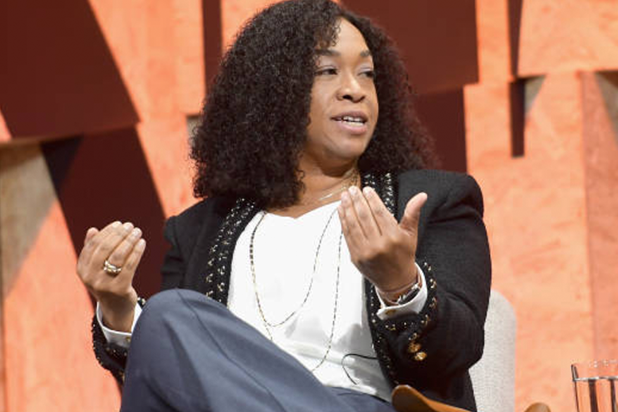Ring the bells that still can ring
Forget your perfect offering
There is a crack, a crack in everything
That’s how the light gets in.
– Leonard Cohen
There’s little doubt that the decade just ending in Hollywood was the most consequential in living memory.
We all know that the entire entertainment business was reshaped in the last 10 years in multiple ways: DVDs definitively went away, major studios consolidated, Netflix became a force and streaming became the new form of distribution.
But beyond those momentous changes, another more subtle reality shifted. The collapse of the studio system — the seven major studios that for 50 years held all the power in entertainment — and the influx of technology giants who dwarfed the likes of Sony and Paramount, coincided with a stunning cultural shift.
After decades of stories dominated by a straight white male sensibility, suddenly a chorus of new voices were everywhere, telling all manner of unconventional stories.
- “Black Panther” in 2018 redefined the superhero movie with a predominantly African-American cast and a story set in Africa.
- Guillermo del Toro in 2017 told a sci-fi fantasy love story in the Oscar-winning “The Shape of Water” that was in fact an allegory for his life as a marginalized Mexican nerd.
- Ryan Murphy brought gay and transgender characters into American homes with “Glee” (which technically debuted in 2009) and later “Pose” (2018).
And women started to appear everywhere — in fact they will direct nearly half of the superhero movies in 2020. Unthinkable to remember that Kathryn Bigelow — once ignored as the ex-wife of “Titanic” director James Cameron — was the first woman to win Best Picture at the Oscars with the searing “Hurt Locker” in 2010.
Also Read: 8 Ways Netflix and the Streaming Revolution Upended Hollywood This Decade

Getty Images
In the 2010s, people who were previously in the margins — women, people of color, the LGBTQ community — were able to emerge. Murphy and del Toro joined Shonda Rhimes, Ryan Coogler and Kathryn Bigelow — along with Ava DuVernay, Lena Waithe, Lena Dunham and Jill Soloway — among the writers, movie directors and TV showrunners whose voices helped define the decade.
The 2010s was the decade when Hollywood cracked open.
I noticed this most when I stepped back recently to consider “Rebels on the Backlot,” the book I wrote about the 1990s in Hollywood and the voices that defined it.
When I wrote “Rebels” in 2005, I was aware that the six iconic filmmakers I had chosen as my focus were all men: Quentin Tarantino, Steven Soderbergh, David Fincher, Spike Jonze, David O. Russell and Paul Thomas Anderson. All white men.
Also Read: 6 Major Lessons Hollywood Learned in the 2010s, From Binging to #MeToo

Being John Malkovich
To me, they were all supremely talented rule-breakers who had defied convention to make the most important films of the 1990s. They had started out in the scrappy world of independent film only to be co-opted by Hollywood’s major studios, the sprawling media companies eager to capitalize on the filmmakers’ cool factor and a new source of box office revenue.
But I was painfully aware that there were no women or people of color whom I felt fit my thesis, even if there were a few wonderful and diverse writer-directors in the decade, whether John Singleton (Boyz ‘n the Hood”) or Kimberly Peirce (“Boys Don’t Cry”).
Today it’s not too hard to notice that the rebels have changed — and so have the backlots. As I write this at the end of 2019, Hollywood has never been less interested in the perspectives of white men. (Which is not to say that plenty of their projects will, in fact, be greenlit.)
Still, in every talent agency and development meeting all over Hollywood, the call goes out for women and people of color behind the camera and in the writers rooms.
The economic disruption in Hollywood has been a major factor in this change. One factor is the demand for volume. Netflix set off an arms race when it pivoted to an online distribution model from the old DVD-by-mail. The streaming service needed product and lots of it. Netflix makes many dozens of movies per year in the U.S. market alone (last year more than 30), compared to traditional movie studios that might make between eight and 20 per year.
Then came “peak TV,” an avalanche of television shows as cable networks battled first each other for viewership and ad dollars and then the online upstarts. And now come the streaming wars. Hulu, Disney+ and the coming HBO Max and Peacock have necessitated a volume of content that has never before been contemplated in entertainment.
As for audience, technology allows distributors to serve up content to their target viewers with unprecedented precision.
By 2019, the $50 million and $100 million development deals handed out by the new streaming services were going to a notably more diverse set of creatives than in previous decades: Rhimes, DuVernay, Murphy all got major deals, but also “blackish” creator Kenya Barris and “Pose” writer-producer (and transgender activist) Janet Mock.
Also Read: TV in the 2010s: How the New Golden Age Turned Into the 'Peak TV' Era

Shonda Rhimes / Getty Images
The change is absolutely vital to the lifeblood of mass entertainment. These new artists have brought a desperately needed new set of experiences and priorities to American culture. Race, social justice and covert operations have been among the new areas of inquiry, so distinctly different from the topics that obsessed, say, a pop culture polymath like Tarantino or a studiously self-involved David O. Russell a generation ago.
The #MeToo movement, expelling from Hollywood those who had harassed women and worse, vastly accelerated other changes in representation in the industry; Hollywood has finally realized that their organizations have to tangibly evolve in order to survive. This is leading not only to more inclusion in hiring — not to mention inclusion riders to enforce inclusive hiring — but, critically, the rise of more diverse leadership in the decision-making class of top executives and boards of directors. (I think of Shari Redstone at ViacomCBS and Ann Sarnoff, who was recently named to run Warner Bros.)
We need more of this to continue to drive the creative engine of this industry.
The world shifted in the 2010s, mostly for the better. It was an unforeseen change that nonetheless expanded the vocabulary of our mass culture, offered a broader and deeper view of the human experience and a richer perspective on the limits of imagination.
The effects of this shift on the world will be seen only over the generation that follows. But the changes feel like they are here to stay.
"Hollywood" - Google News
December 26, 2019 at 09:15PM
https://ift.tt/35ZKzyL
The Decade When Hollywood Cracked Open – In Praise of the 2010s - TheWrap
"Hollywood" - Google News
https://ift.tt/38iWBEK
Shoes Man Tutorial
Pos News Update
Meme Update
Korean Entertainment News
Japan News Update
Bagikan Berita Ini














0 Response to "The Decade When Hollywood Cracked Open – In Praise of the 2010s - TheWrap"
Post a Comment